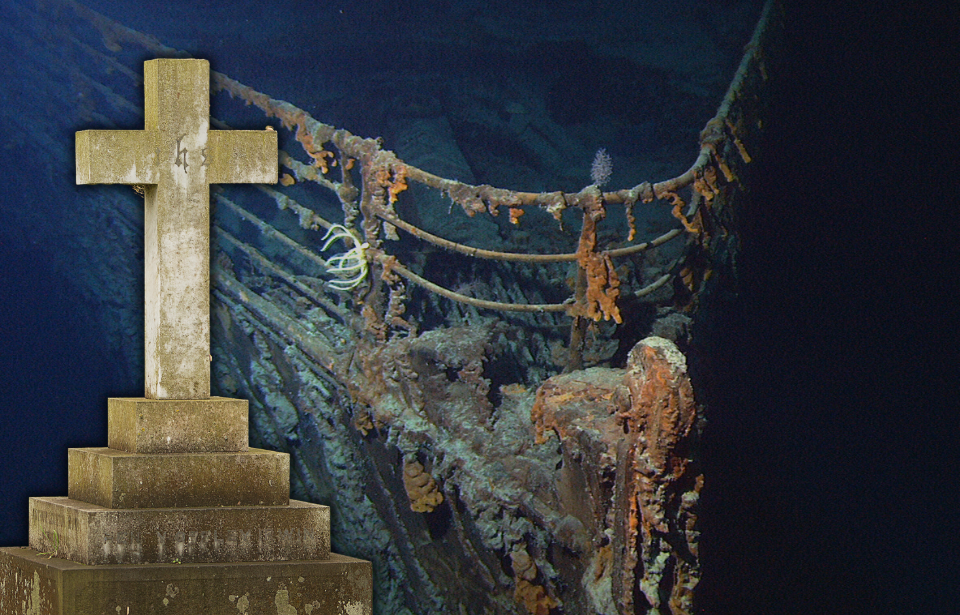Almost immediately after the Titanic sank on April 15, 1912 calls to raise the wreck from the depths of the Atlantic were gaining traction. The family members of wealthy Titanic victims like the Astors and Guggenheims contracted the Merritt and Chapman Derrick and Wrecking Company to salvage the ship.
The project was ultimately called off due to a lack of technology to withstand the overwhelming underwater pressure. Eventually, the mere location of the wreck would be lost to time. When the wreck was finally discovered in 1985, a new controversy over how to treat the site came to the forefront: should the Titanic and the artifacts she holds be preserved, or should it be left alone and treated like a burial site?
The unthinkable tragedy of the unsinkable ship
On April 10, 1912, the RMS Titanic set sail on her maiden voyage from Southampton, England to New York City with 2,208 souls on board. At 882 feet long, the Titanic was one of the largest British luxury liners to enter the booming transatlantic passenger trade – with four elevators, an opulent first-class dining saloon, and a swimming pool.
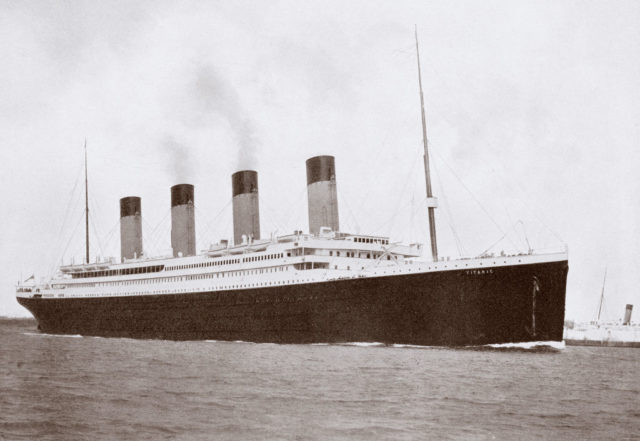
One year before her maiden voyage Titanic was advertised as so safe, “God himself could not sink this ship!”. Little did the ship’s owner, White Star Line, know that within a matter of months the world’s first “unsinkable” ship would become the world’s most renowned naval disaster.
Since the wreck was discovered in 1985, seven trips have been made to the Titanic where over 5,500 artifacts have been salvaged. Small personal items like jewelry, money and White Star Line branded dishes have been found intact despite decades underwater, while massive pieces of the ship’s hull have also been taken from the wreck site and put in museums.
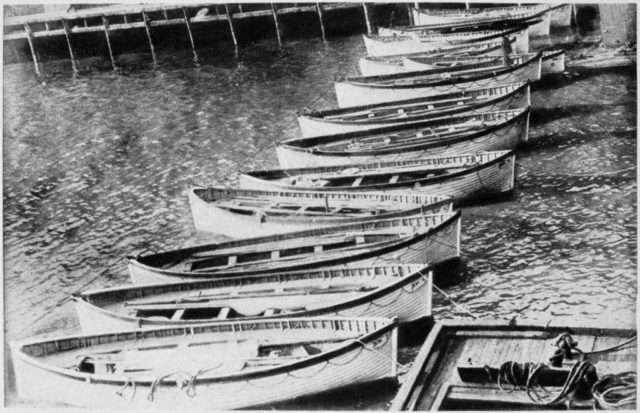
Multiple historians and even survivors of the tragedy have condemned the practice of “stealing” artifacts from the site and treating it like a mass grave, while others believe that bringing them to the surface is the only chance to preserve the history of the Titanic before the wreck disappears after more than a century underwater.
These artifacts reveal the mystery of the wreck of the Titanic and the complicated history of preserving one of the most famous shipwrecks in the world.
Pocket watch
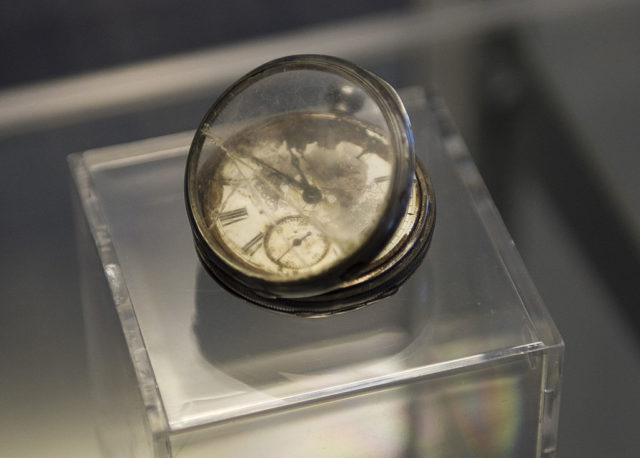
One of the main supporters of the Titanic conservation movement, which believes that items from the wreckage should be recovered and conserved in archives and museums, is George Tulloch. Tulloch’s approach to Titanic artifacts has produced astounding results, like the gift he presented 96-year-old survivor Edith Brown Haisman. In 1991, Tulloch gave Haisman her father’s pocket watch which had been retrieved from the sea bed.
The last time Haisman had seen the watch was the night of the sinking as her father waved goodbye to her and her mother as they boarded a lifeboat. Her father was one of many men who went down with the ship.
Shoe
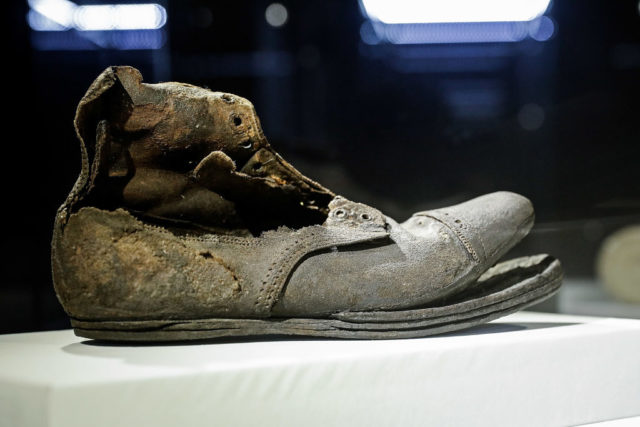
The select items of clothing, including shoes like this one, recovered from the Titanic are a haunting reminder of the loss of human life that occurred during the sinking. Unlike fine china or metal pieces of hull, personal items as simple as a shoe are directly tied to a passenger whose only remains are the things they were wearing that fateful night. For many, the wreck of the Titanic is considered to be a mass grave site and not just a historic attraction.
The Big Piece
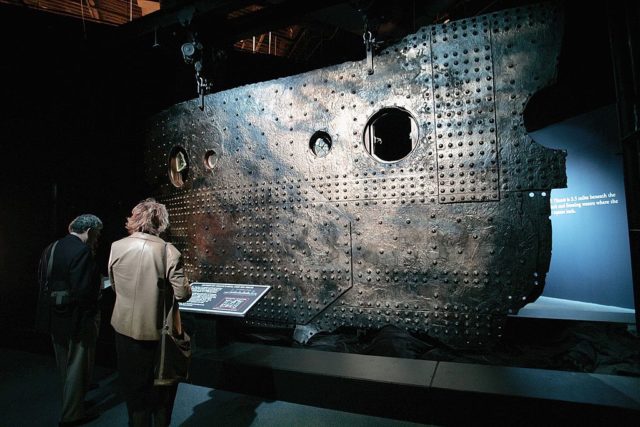
This massive 15-ton section of Titanic‘s hull – known as “the big piece” – was raised in 1998. The section from the ship’s starboard side still has glass in the portholes that would have been inside passenger cabins. Those who see the piece are said to become overwhelmed with emotion, as it helps to bring the larger-than-life story of the tragic sinking to life.
Bell
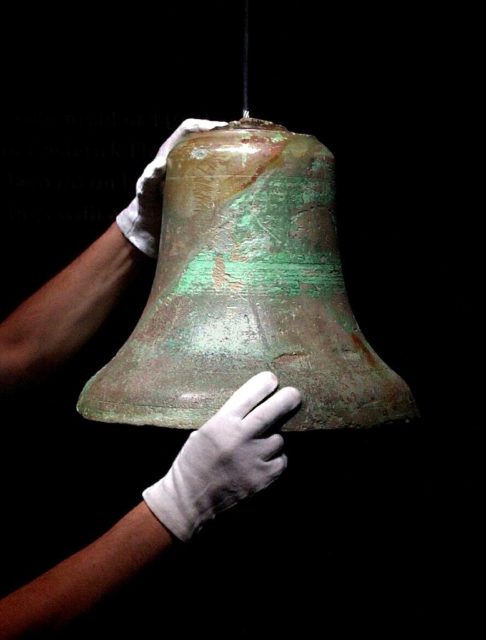
The bell from the Titanic’s iconic crows nest created a massive controversy when RMS Titanic Inc. – a company that organizes traveling Titanic exhibitions – “accidentally” demolished the wreck’s crows nest while retrieving the bell, breaking their “hands-off” policy towards wreck exploration.
Should artifacts be taken from Titanic?
In 2016 RMS Titanic Inc. – the private company with exclusive salvage rights to the wreckage – filed for bankruptcy, sparking a tug-of-war over who would house and conserve the thousands of artifacts owned by the company. Museums and historians around the world have since spoken out against RMS Titanic Inc. over their “inept” and “superficial” treatment of artifacts.
The International Congress of Maritime Museums has also publicly denounced the lack of proper data organization and collection of information gathered during the multiple salvage missions that make vital information about the wreck inaccessible to historians and the public.
While some believe that collecting and preserving artifacts is the only way to keep the memory of the Titanic alive, survivors Like Eva Hart have condemned salvaging Titanic artifacts. Hart criticized the efforts as soon as they began in 1987, condemning the salvers’ “insensitivity and greed” and labeling them “fortune hunters, vultures, pirates, and grave robbers.”
More from us: Titanic’s Wreckage Is Rusting Away and Will Soon Disappear Forever
The heated debate over conservation vs protection has only intensified in recent years as the Titanic slowly begins to rust away. Entire parts of the ship are already gone, including Captain Edward Smith’s quarters. Experts believe that by 2030, Titanic could be gone forever.
